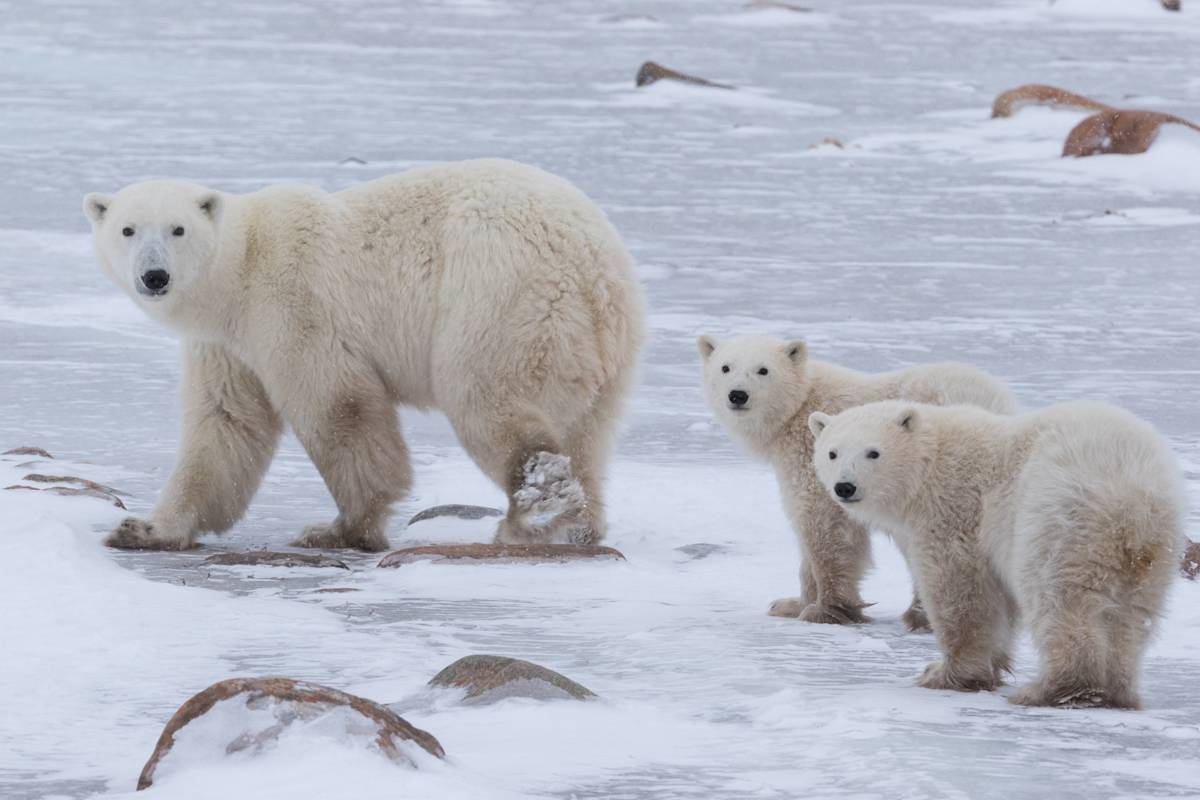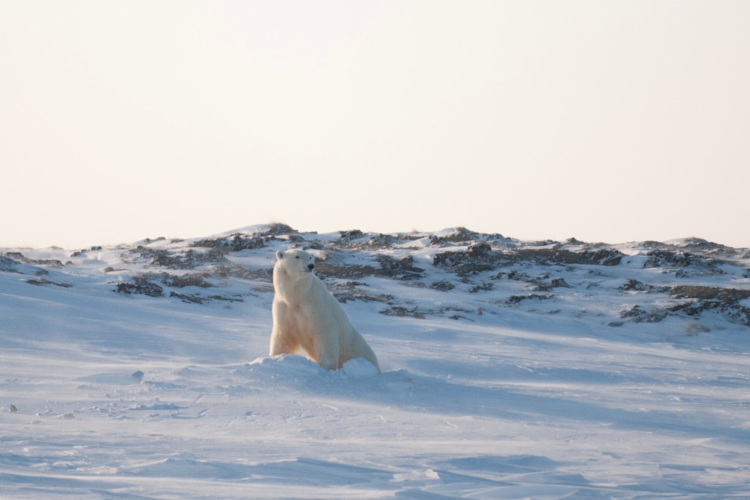With 19 polar bear populations across the Arctic, we are seeing 19 different scenarios play out as sea ice conditions change at different rates (and in different ways) across the polar bear’s range. Canada’s Western Hudson Bay population, which includes the bears that gather each fall near Churchill, is one of the populations in decline.
Sea ice break-up on Hudson Bay is three to six days per decade earlier than it was before, and freeze-up is delayed about the same. If one ponders that we’ve seen this trend since 1979 (the start of the satellite record), the problem becomes clearer: prolonged ice-free periods mean the bears have to stretch their fat reserves for several more weeks now. Given that your “average bear” loses about 1 kilogram (2.2 pounds) of body mass per day when on land and fasting, a few weeks extra time without food has consequences.
We’ve seen the effects of the longer fasting period on reproduction (fewer successful pregnancies) and in lower survival rates of the youngest and oldest bears. Collectively, the changes have resulted in a 30 percent drop in the population, from 1,185 bears in 1987 to 806 bears in 2011—the most recent insights we have for the Western Hudson Bay bears.
Changes Over Time
When I started studying polar bears in 1984, the Churchill denning area was awash with mothers with cubs. It’s a far different story now. The 30 percent decline in their population size is part of the explanation but larger issues loom. The life history of the bears may be masking a growing problem. With fewer new cubs, a population slowly ages and, after a number of years, a precipitous decline occurs as the bears drop off the end of the age structure. Is that happening with the Western Hudson Bay population? It’s hard to say. Population monitoring is complex and there are other factors involved.
As the ice-free season lengthens, we’re seeing more problem polar bears and more problem bears killed as a result of conflicts with people. Two people were killed by polar bears in Hudson Bay last summer. This was an extremely unusual situation, but one likely associated with more bears being on land near humans for longer time periods. The deaths were a tragedy for the communities and a symptom of a growing problem. As the sea ice shrinks, human-polar bear interactions are increasing throughout the polar bear’s range.
Another issue is that the harvest of the Western Hudson Bay population is
unsustainable. A declining population cannot support a sustainable harvest. However, communities in Nunavut are seeing more polar bears and are suffering from more conflicts with them. Reducing the size of the polar bear population is one way to reduce the conflicts. The increase in conflicts was expected with climate change but this is likely a transient dynamic: as the population declines, there will be fewer bears to get into trouble.
What the Future Holds
So, is it all doom and gloom for the Western Hudson Bay population? Not yet. An odd quirk of climate may have slowed the predicted decline. The polar vortex may be helping the bears by giving Hudson Bay some extra frigid weather now and again. When the polar vortex detaches from the north (think of it as a southward bulge in Arctic weather), the sea ice in Hudson Bay gets a boost in thickness. Thicker ice can last longer and thus, the loss of sea ice in Hudson Bay hasn’t slipped away as fast I thought it might. Of course, the downside is that eastern Canada and the U.S. get blasted by wickedly cold weather. On the upside, the bears love it. The polar vortex isn’t going to save the Western Hudson Bay bears but it adds complexity to their story.
On the positive side of the equation, we still have every reason to believe that polar bears will persist to the end of the century. Yes, their range will be much smaller and they won’t likely be in Hudson Bay anymore but we have some time to strategize how to help the bears if we take on the challenge of dealing with greenhouse gas emissions. A vision of a world with polar bears for future generations to marvel at is one worth embracing.
Dr. Andrew Derocher is a professor of biological sciences at the University of Alberta.

















